Smart Learning Hub
Where Student-Centered Learning
Meets Future-Ready Skills
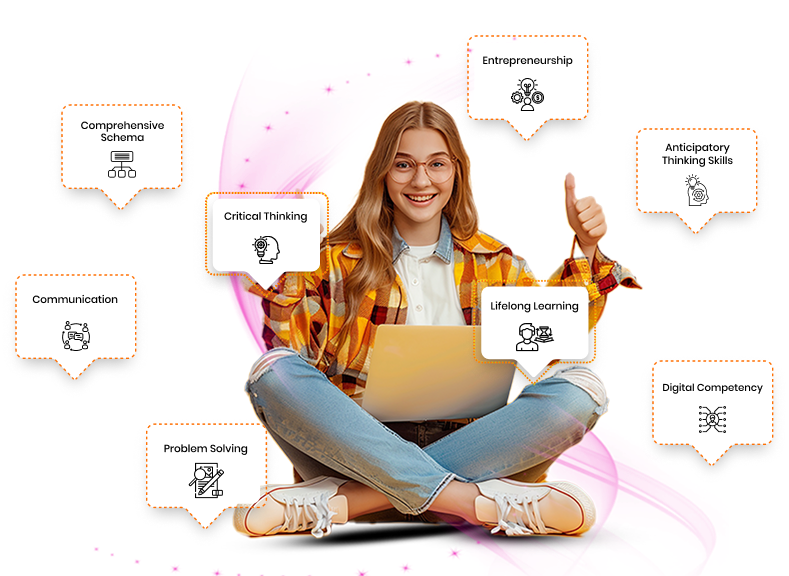

Discover the best learning methods tailored to your Learning Style, Goals, Language Proficiency, Difficulty Level and Subject Content.
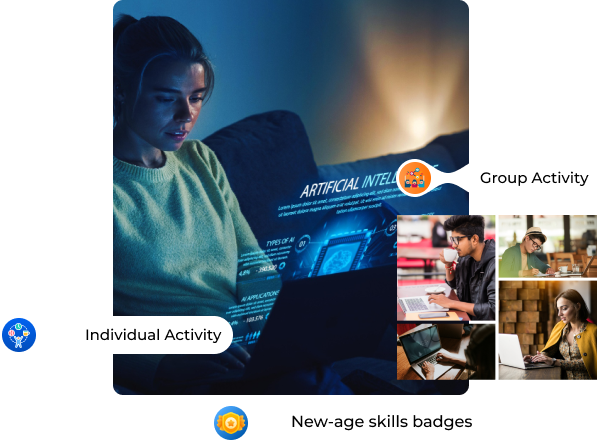
Anytime, Anywhere, Any subject
This user manual is your step-by-step guide to navigating YMetaconnect, designed to help learners, mentors, and institutions achieve better outcomes.
From setting up your learning dashboard to tracking progress using RAR and SIMD tools, this guide will walk you through everything you need to make the most of YMetaconnect’s personalized learning environment.
Download Brochure
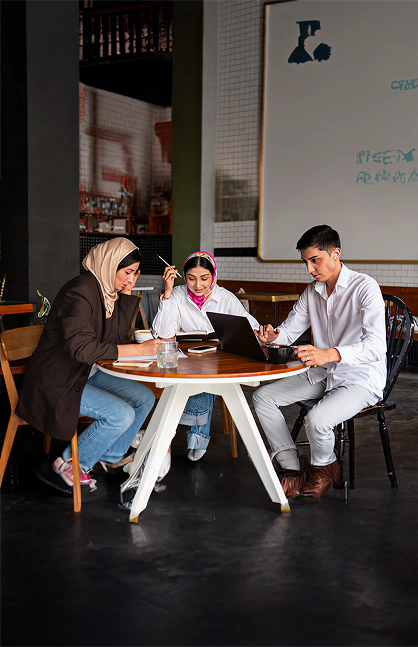

Students, professionals, and individuals can prepare for school, university, and competitive exams, explore job and placement opportunities, connect with peers, and reflect on their growth.


Teachers, professionals, and trainers can design engaging learning content, track learner progress, connect with a global audience, and earn rewards based on the success of their courses.


Companies, universities, schools and institutions can engage with emerging talent, support learning initiatives, and identify skilled individuals for collaboration, internships, or job opportunities to learners.
We enhance self-regulation through the R-A-R AI Tool™ and the Self-Instructional Metacognitive Developer™, empowering deeper learning and fostering new-age skills that give learners a true competitive advantage.
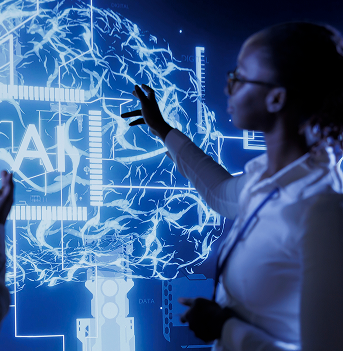
Implementing student-driven learning through the RAR framework to enhance academic performance, competitive exam success, and human-centric skill
Learn More
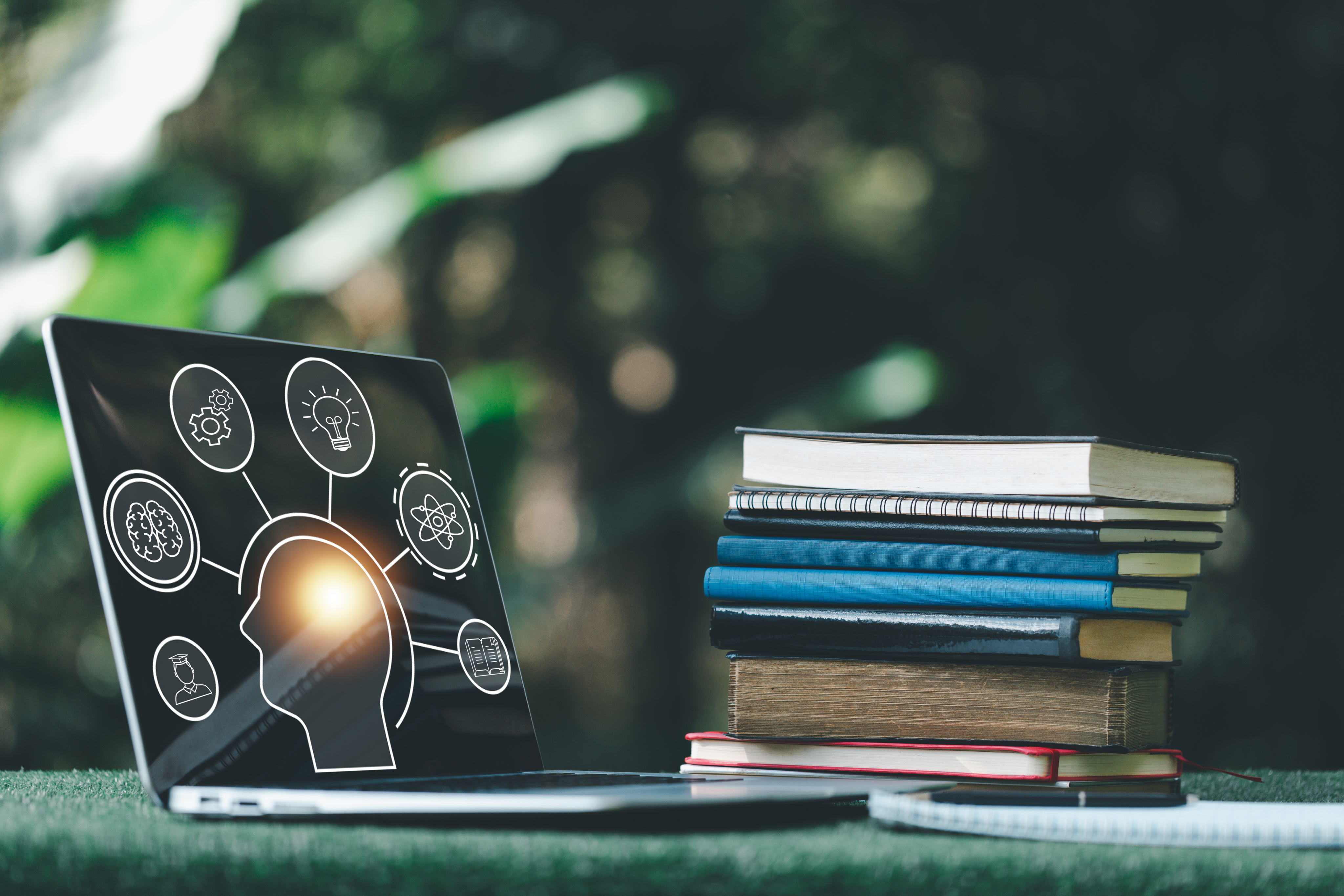
Personalized & Interactive learning Active Learning & Engagement Collaborative Learning Critical thinking and Problem Solving Metacognition & Self-Regulated Learning
Learn More
Follow customized learning paths that suit your pace and style. The platform adapts to your strengths and gaps using AI tools for deeper subject understanding.
Use R-A-R AI tools and the SIMD method to review, act, and reflect on what you’ve learned. Prepare for competitive and school exams with confidence and strategy.
Gain digital certificates, skills badges, and learning rewards as you progress. Build study habits, critical thinking, and self-regulated learning skills to achieve your goals.
Easily monitor each learner’s journey using SIMD insights and R-A-R reflections. Provide meaningful guidance based on real-time learner data.
Save time with automated feedback and self-assessment tools. Focus more on mentoring and less on admin work.
Receive digital certifications, and opportunities for professional development. Join our mentor community and grow your educational impact.
Deliver better learning outcomes with personalized, AI-powered tools that help students build real-world, in-demand skills. YMetaconnect supports structured learning, reflection, and continuous growth for future-ready graduates.
Equip learners with employability skills like critical thinking, communication, and self-regulation. With targeted training and assessment tools, students become placement-ready and attractive to top recruiters.
Offer a future-ready learning environment that attracts more students and builds your institution's reputation with industry partners. Better student outcomes and successful placements elevate your brand value among employers.




I recently used the beta version of YMetaconnect, and it has been an amazing experience. The
tools are very easy to use and truly support the way I plan and guide my sessions. What
stood out most is how well the platform follows student-centered learning principles. It
encourages students to take charge of their progress while allowing me to support them more
meaningfully. YMetaconnect makes it easier to develop essential skills like innovation,
leadership, motivation and critical thinking in learners. It’s been helpful not just for my
mentoring but also for creating a more engaging and personalized learning journey for
students.
Dr. Vidhya Pillai, Associate Professor and MBA Program Head, Bangalore

YMetaconnect completely changed the way I study. I used to feel overwhelmed
before exams, but
with the RAR method and daily tracking tools, I became more organized and confident. The
Review–Action–Reflection routine helped me understand my weak areas and improve step by
step. Now, I’ve cracked my entrance exams and am applying to the top 20 colleges in the
world. YMetaconnect made me believe it’s possible!
– Advait Krishna, Singapore

YMetaconnect has really helped me grow in my job. It made it easy for me to work on important
skills like communication and critical thinking. The tools are simple to use, and I like how
it helps me think about what I’m learning. It’s a great platform to improve skills that
matter at work.
– Mukul Gupta, Bussiness Analyts, Jaipur

YMetaconnect changed how I approach studying. Using the RAR method helped me realize where I was going wrong and how to fix it. I don’t just memorize anymore, I actually understand what I’m learning.
Read more
As a mentor, YMetaconnect made it easier to guide students through structured reflection. The Review-Action-Reflection format gives students ownership of their learning and I can clearly see their progress over time.
Read more
Before this platform, I never thought about how I think. Now, through self-assessment tools and journaling, I know how to study smarter, not harder. My grades and confidence both improved!
Read more
The built-in metacognitive tools are brilliant. I’ve used many learning platforms, but YMetaConnect uniquely blends reflection with goal tracking. It’s a game-changer for fostering real growth in students.
Read more
YMetaconnect encourages students to ask the right questions, not just find answers. Watching them evolve into self-directed learners has been the most rewarding part of mentoring here.
Read more
I'm truly impressed by YMetaconnect. It's a thoughtfully designed platform that empowers learners and supports mentors in meaningful ways. It’s exactly what students need to prepare for the future. With a strong focus on 21st-century skills, it helps build confident, capable, and future-ready individuals. Highly recommended!
Read more
Education is not only about teaching facts and preparing students for exams. True education is about helping learners think, question, and reflect on their knowledge and experiences. This is where the idea of a reflection-first curriculum becomes powerful. Instead of focusing only on what is taught, schools must also focus on how students learn and how teachers adapt their approaches. In this article, we will explore why reflection in education is important, how it transforms both teaching and learning, and what strategies schools can use to create reflection-first curriculums. What is Reflection in Education? Reflection in education is the process of looking back on what has been learned or taught, analyzing it, and making sense of it. It involves questioning: What worked well? What was confusing? How can I improve next time? For students, reflection means thinking about their study habits, understanding mistakes, and connecting lessons to real life. For teachers, reflection means evaluating their teaching approaches and strategies, adjusting methods, and finding new ways to make learning effective. Reflection makes learning more student-centered because it encourages active thinking instead of passive memorization. Why Reflection-First Curriculum Matters? Traditional curriculums often prioritize coverage of topics and testing. This leaves little time for critical reflection. However, reflection-first curriculums shift the focus from just teaching to truly learning and understanding. Benefits for Students: Improves learning skills and self-awareness. Encourages metacognitive teaching where students monitor their own learning. Helps in long-term knowledge retention instead of short-term cramming. Builds confidence through self-evaluation. Benefits for Teachers: Encourages reflective teaching, where teachers adapt based on student feedback. Promotes teaching and learning strategies that are flexible and effective. Creates stronger teacher-student connections through open dialogue. Key Elements of a Reflection-First Curriculum To build a reflection-first curriculum, schools need to integrate reflective practices at different stages of teaching and learning. These elements ensure that both students and teachers develop awareness, adaptability, and deeper understanding. Some essential elements include: 1. Structured Reflection Time Instead of rushing into the next topic, schools should dedicate specific time for reflection. This could be five minutes at the end of a lesson or a weekly session where students write about their learning journey. Tools like reflection journals, exit slips, or quick group sharing sessions allow learners to pause, think, and make sense of what they studied. This habit builds self-awareness and improves long-term retention. 2. Metacognitive Teaching Metacognition, “thinking about thinking”, is a vital part of reflective learning. Teachers can guide students to plan their learning approach, monitor progress, and evaluate results. For example, before solving math problems, students can ask themselves: What strategy should I use? How will I check my answer? Such practices strengthen problem-solving skills and help learners become independent thinkers. 3. Reflective Teaching Teachers also need reflection to improve their practice. After each lesson, educators can ask themselves: Did students engage? Was my explanation clear? What should I adjust next time? This process of reflective teaching creates a continuous cycle of improvement, ensuring that teaching strategies remain effective and student-centered. 4. Critical Reflection Activities Reflection should not stop at recalling facts. Students must be encouraged to question how and why something is important. For example, after a history lesson, a teacher might ask: How would this event look from another perspective? Such critical reflection deepens understanding and builds analytical skills. 5. Peer and Group Reflection Group reflections and peer feedback are powerful learning tools. When students share their perspectives, they gain new insights and learn collaboration. Activities like peer review in projects or group reflection circles help develop critical thinking, communication, and teamwork. 6. Integration into Assessment Reflection should also be a part of grading. Instead of focusing only on final answers, teachers can include reflective tasks such as a learning log or a self-assessment note. Asking students to explain their process fosters accountability and encourages meaningful learning beyond memorization. Teaching Approaches and Strategies for Reflection-First Curriculums Schools can use several teaching approaches and strategies to create a reflection-first environment: 1. Socratic Questioning Teachers can use open-ended questions to push students beyond surface learning. Questions like Why do you think this is true? What other possibilities exist? encourage deeper reflection. 2. Project-Based Learning (PBL) In PBL, students work on real-world projects and reflect on their decisions, teamwork, and challenges. Reflection becomes part of the project cycle. 3. Flipped Classrooms In a flipped classroom, students review content at home (via videos or readings) and spend class time reflecting, discussing, and applying knowledge with teacher guidance. 4. Reflective Journals Encouraging students to write daily or weekly reflections on their learning process builds self-awareness. This simple tool develops reflective learning as a habit. 5. Peer Teaching and Feedback When students explain topics to peers, they reflect on their own understanding. Peer feedback also gives them new perspectives on their strengths and areas for growth. 6. Self-Assessment Checklists Provide students with simple rubrics or checklists to evaluate their performance. This builds metacognitive awareness. Roles of Teachers and Students in a Reflection-First Curriculum A reflection-first curriculum is not built by content alone, it thrives on the active roles played by both teachers and students. Reflection is a two-way process, where teachers guide and model reflective practices while students take ownership of their learning journey. Together, they create a classroom culture where learning goes beyond memorization and becomes meaningful, adaptable, and student-centered. Role of Teachers Teachers play the most important role in establishing a reflective culture. Their role shifts from being mere knowledge deliverers to becoming facilitators of learning. Model Reflective Thinking: Teachers can share how they reflect after a lesson, what worked, what didn’t, and how they plan to improve. This helps students see reflection as a practical skill. Encourage Dialogue: By creating safe and supportive spaces, teachers allow students to share struggles, ask questions, and openly discuss challenges. Provide Feedback: Constructive comments guide students in identifying strengths and areas of improvement, making reflection more structured. Be Flexible: Reflective teaching means adapting lessons based on what students share, ensuring teaching stays relevant and responsive. Through reflective teaching, educators continuously grow alongside their students, showing that learning is an ongoing journey for everyone. Role of Students Students are not passive participants in a reflection-first curriculum; they must take active responsibility for their learning. Set Learning Goals: Defining clear goals gives students direction and motivation. Monitor Progress: By tracking achievements and struggles, students become aware of their learning patterns. Reflect on Strategies: Thinking about what study methods worked and what didn’t helps refine approaches for better outcomes. Accept Feedback: Being open to teacher and peer feedback develops resilience, adaptability, and collaborative skills. When students engage in this way, learning becomes student-centered, shifting the focus from rote memorization to critical thinking, problem-solving, and continuous growth. Practical Examples of Reflection Activities Here are some simple ways schools can integrate reflection in daily learning: Exit Slips – At the end of class, students answer one reflective question: What did I learn today? What remains unclear? Learning Journals – Weekly reflections on progress, challenges, and future goals. Think-Pair-Share – Students think individually, discuss with a partner, and then share with the class. Concept Mapping – Students create diagrams to connect ideas and reflect on how topics relate. Learning Portfolios – Collection of assignments along with reflective notes. Reflection Circles – Group discussions where students share their experiences and learn from peers. Challenges in Creating Reflection-First Curriculums While reflection-first curriculums bring powerful benefits, schools often face real challenges in implementing them: Time Constraints: Teachers are under pressure to complete the syllabus quickly, leaving little room for reflection activities. Assessment Pressure: Standardized exams focus on grades and correct answers, not on reflection or the learning process. Teacher Training: Many educators are not formally trained in reflective teaching or metacognitive strategies. Student Resistance: Some students may see reflection tasks as extra work instead of understanding their long-term value. Solutions To overcome these barriers, schools need to adopt balanced approaches. Teachers can integrate short reflection tasks (like exit tickets or one-minute journals) without losing teaching time. Assessments can include reflective components such as learning journals or process-based marks, shifting focus from only outcomes to learning progress. Training programs for teachers in reflective teaching and metacognitive strategies can build confidence in applying these methods. Finally, schools should help students see reflection not as extra work but as a skill that improves memory, problem-solving, and exam performance. By addressing these challenges strategically, reflection-first curriculums can become practical, impactful, and sustainable. The Future of Reflection in Education As the world changes, schools need to prepare students not just for exams, but for lifelong learning. Reflection-first curriculums are a step toward student-centered learning, where learners know how to think, adapt, and grow. With technology, reflective learning can become even more interactive: Online journals and blogs. Digital portfolios. AI-driven self-assessment tools. The combination of reflection in education with modern technology can help students become independent thinkers and adaptable professionals. Conclusion A reflection-first curriculum is not about removing traditional teaching but about enriching it. By combining reflective learning, reflective teaching, metacognitive strategies, and student-centered approaches, schools can help learners build critical thinking, adaptability, and lifelong learning skills. Reflection turns education into more than just remembering facts, it makes it meaningful, personal, and transformative. When students and teachers reflect together, learning becomes a journey of growth, not just a race for grades.


When students talk about career skills, they usually think of technical abilities like coding, accounting, designing, or data analysis. While these are useful, they can become outdated very quickly. The workplace is changing faster than ever, and the most important ability to succeed is learning agility. Learning agility means being flexible, adapting to new situations, and picking up skills quickly when challenges arise. It’s about learning, unlearning, and relearning as needed. Sadly, most students are never formally taught this essential skill. But in reality, learning agility is the key to long-term career success, adaptability, and growth in an uncertain future. What Is Learning Agility? Learning agility is the ability to quickly learn from experience, apply that knowledge in new situations, and adapt when things change. It’s not about knowing everything, but about knowing how to learn and adjust when faced with challenges. For example: If your company adopts a new technology, you don’t panic, you explore tutorials and learn to use it. If your career path changes, you can transfer your skills and grow in a different role. If you face unexpected challenges, you find creative solutions instead of giving up. In short, learning agility means staying flexible, curious, and ready for growth. Why Learning Agility Is the Top Career Skill? Most people assume technical knowledge or degrees guarantee career success. But employers today value adaptability and quick learners even more. Here’s why: Fast-Changing Workplaces Jobs are evolving. New tools, methods, and technologies appear almost every year. Those who resist change struggle, while agile learners thrive. Solving Unknown Problems You won’t always face problems you already know how to solve. Learning agility helps you find answers, even when the situation is new. Employers Value Adaptability Recruiters often say, “We can teach the job, but we can’t teach attitude.” The ability to learn quickly makes you stand out more than just having fixed knowledge. Long-Term Career Growth Success isn’t about mastering one skill; it’s about continuing to learn throughout your career. This is why career growth through adaptability is possible only with learning agility. Importance of Learning Agility in Careers The importance of learning agility in careers is huge because it affects every stage of your professional journey. In fact, it is one of the most valuable future career skills that ensures long-term growth and adaptability. In job applications: Employers today don’t just look at your technical knowledge. They want to see curiosity, openness, and the ability to pick up new learning skills quickly. Candidates who show learning agility stand out because they can adapt to different roles and tasks. In promotions: Moving up in your career is not only about experience but also about handling new responsibilities. Managers prefer employees who display career growth through adaptability, those who can take on challenges, learn from mistakes, and adjust to new situations. In career shifts: Industries change fast due to automation and technology. A skill that is relevant today might become outdated tomorrow. With learning agility, you can smoothly move into new opportunities by learning, unlearning, and relearning as required. In short, why learning agility is the top career skill is clear, it keeps you relevant in a changing world. Unlike technical skills that expire, soft skills like adaptability, curiosity, and resilience make you future-ready. By developing personality development and soft skills along with learning agility, you build a career that grows stronger no matter what challenges come your way. The Link Between Soft Skills and Learning Agility Many people think soft skills only mean being good at communication or teamwork. While those are important, the truth is that soft skills form the very foundation of learning agility. Without them, it becomes difficult to adapt, grow, or succeed in today’s fast-changing career environment. For example, curiosity pushes you to ask questions, explore new ideas, and stay open to continuous learning. Adaptability helps you remain calm and flexible when situations change, whether it’s a new role, new technology, or a workplace challenge. Critical thinking gives you the ability to connect past knowledge with fresh problems, finding solutions even in unfamiliar situations. Meanwhile, self-awareness allows you to reflect on your strengths, weaknesses, and mistakes so that you can improve with every experience. This is why personality development and soft skills go hand in hand with career growth through adaptability. By strengthening soft skills, students and professionals not only become better team players but also more agile learners. In the long run, this agility makes them stand out in job applications, promotions, and career shifts, proving that soft skills are at the heart of future career success. Learning Agility vs. Traditional Learning Traditional education often focuses on memorizing facts and following fixed methods. But real life doesn’t work like that. In school, you may solve math problems using the same formula. In the workplace, problems are unpredictable, and there’s no single formula. Learning agility is about moving beyond fixed answers and becoming flexible enough to handle uncertainty. This makes it more valuable than traditional memorization-based learning. Examples of Learning Agility in Real Life Let’s see how learning agility plays out in real situations: A teacher had to switch to online teaching during the pandemic. Those who were agile quickly learned digital tools and thrived. A marketing professional shifted from traditional ads to digital campaigns by learning social media analytics. An engineer learned project management skills and grew into a leadership role. In all these cases, adaptability, not degrees, created success. Future Career Skills: Why Agility Comes First When we talk about future career skills, many lists include AI knowledge, problem-solving, digital literacy, and leadership. But behind all of these is one core requirement, learning agility. Think about it: To use AI tools, you must be willing to learn them. To solve problems, you must adapt your approach. To lead teams, you must learn from people and experiences. That’s why experts call learning agility the “meta-skill” that supports all other skills. How to Build Learning Agility? The good news is that learning agility is not something you’re born with, it can be developed. Here are some strategies: 1. Stay Curious Ask questions, explore different perspectives, and don’t settle for surface-level knowledge. 2. Practice Reflection After every project or task, ask yourself: What worked? What didn’t? What can I do differently next time? 3. Take on New Challenges Step outside your comfort zone. Volunteer for tasks you’ve never done before. This builds adaptability. 4. Learn from Feedback Instead of avoiding criticism, see it as a chance to grow. 5. Build a Growth Mindset Believe that abilities can improve with effort and practice. This mindset is the backbone of learning agility. Learning Agility and Career Growth When you combine agility with other career skills, you create a powerful formula for success. Here’s how it supports growth: Early career: You’ll quickly learn job roles and stand out as a fast learner. Mid-career: You’ll adapt to leadership responsibilities and evolving industries. Long-term career: You’ll stay relevant in a world where many traditional jobs may disappear. This is why many professionals say career growth through adaptability is more important than any single technical skill. The Importance of Soft Skills in Agility Soft skills are essential for building learning agility and ensuring long-term career success. While technical knowledge helps you enter a job, soft skills allow you to grow, adapt, and thrive. Here’s how they play a role: Communication – Helps you express ideas clearly, collaborate effectively, and learn from others. Emotional Intelligence – Enables you to understand emotions, manage stress, and build stronger relationships. Teamwork – Encourages cooperation, sharing of knowledge, and solving problems collectively. Resilience – Keeps you motivated and adaptable, even when facing failures or setbacks. Adaptability – Allows you to adjust quickly to change and embrace new opportunities. Self-awareness – Helps you identify strengths and areas of improvement for continuous growth. Together, these soft skills combine with learning agility to create a complete personality package that employers value in the future workplace. Why No One Taught You This in School? Most schools and colleges are designed around grades, exams, and fixed curriculums. While these are important, they often miss teaching learning agility, the skill that truly prepares you for the future. Here’s why: Focus on memorization – Students are taught to remember facts instead of how to adapt. Standardized tests – Success is measured by scores, not by problem-solving or flexibility. Fixed syllabus – Learning is limited to subjects, leaving little room for adaptability. Lack of real-world skills – Schools rarely train students to face uncertainty or career shifts. This is why many students feel unprepared when entering the workplace. But the good news is, now that you understand the importance of learning agility, you can practice and develop it on your own to stay ahead. Conclusion The workplace of today and tomorrow is unpredictable. Jobs will change, industries will evolve, and technology will keep advancing. The one skill that prepares you for all of this is learning agility. It’s more than just another skill, it’s the foundation of all future growth. With learning agility, you can handle uncertainty, grow faster in your career, and always stay relevant. So, while degrees and technical skills may help you get started, it’s learning agility that will keep you ahead. Start building it now, and you’ll have the most powerful advantage no one taught you in school.


Have you ever studied for hours only to forget almost everything when it’s time for an exam? You’re not alone. Many students face this problem, and the good news is that it’s not because you’re “bad at studying.” It’s because most students don’t know how to train their memory. This is where metamemory comes in. Metamemory is the awareness and understanding of how your memory works. In simple words, it’s “thinking about your memory.” When you know how your brain stores, recalls, and forgets information, you can use the right memory training techniques to improve your learning. In this article, we’ll explore how to train your brain for better memory using metamemory strategies, practical learning techniques for students, and step-by-step ways to boost retention. What is Metamemory? Metamemory is part of metacognitive learning, it’s when you monitor and control your own memory processes. For example: When you decide to review your notes because you know you might forget them, that’s metamemory. When you realize you remember information better with diagrams instead of plain text, that’s also metamemory. It’s about being aware of your strengths and weaknesses and using cognitive training to make learning more effective. Why Metamemory Matters for Students? Without metamemory, most students end up using random learning methods that may not actually help them remember. They often fall into bad study habits such as cramming the night before exams, passively reading textbooks without testing themselves, or trying to memorize without understanding. These habits may feel like “studying,” but in reality, they lead to quick forgetting and poor exam performance. With metamemory, students become more aware of how their memory works. They can take control of their learning and make smarter choices. For example, a student who knows they remember better with visuals can use diagrams and mind maps. Another student who learns better by teaching others can turn revision into short teaching sessions. This awareness transforms study time into something much more effective. With metamemory, students can: Identify the best memory techniques for themselves. Instead of copying what others do, they find methods that fit their style. Reduce forgetting by applying proven strategies. Techniques like spaced repetition and active recall strengthen long-term memory. Save study time by focusing on what works. Less time wasted on ineffective methods means more time for real understanding. Boost exam performance with stronger recall. When memory is trained, recalling information in exams feels easier and more natural. In short, metamemory gives students control over how they learn and remember. It’s not just about studying harder, but about studying smarter. By practicing metamemory, students can build lasting learning skills that help them not only in exams but also in their careers and everyday life. The Science of Memory and Forgetting Before we dive into memory training, it’s important to understand how memory works. Encoding: The stage where your brain takes in new information. Storage: Keeping the information in your brain for later use. Retrieval: Bringing the information back when you need it (like during exams). The problem is that the brain forgets information quickly, as shown in the forgetting curve by psychologist Hermann Ebbinghaus. Without revision or recall, most information fades in days. That’s why students need active learning strategies, not just reading, but practicing, testing, and revising with purpose. How to Train Your Brain for Better Memory? Here are the most effective metamemory strategies for learners and memory training techniques: 1. Use Spaced Repetition Instead of cramming, review material at intervals: 1 day, 1 week, 1 month. This strengthens long-term memory and slows down the forgetting curve. 2. Practice Active Recall Close your book and try to remember what you studied. Use flashcards, quizzes, or simply write down what you know. The more you recall actively, the stronger your memory becomes. 3. Apply Chunking Break big information into smaller parts. Example: Instead of remembering “149217761945,” chunk it into “1492, 1776, 1945.” Students can apply chunking to formulas, history dates, or vocabulary. 4. Use Mnemonics and Visuals Create acronyms or rhymes to make facts memorable. Draw mind maps, flowcharts, or doodles to connect concepts. Visuals help in peak brain training because the brain remembers images better than words. 5. Teach Others (The Protégé Effect) Explaining concepts to classmates or even to yourself out loud reinforces memory. Teaching requires you to organize information clearly, which deepens understanding. 6. Relate Learning to Real Life Connect theories to personal experiences, news, or real-world applications. This not only improves retention but also makes studying meaningful. 7. Cognitive Training Games Memory puzzles, logic games, and brain apps can sharpen recall speed. While not replacements for real study, they enhance focus and mental flexibility. Metamemory in Action: A Step-by-Step Plan Here’s how students can apply metamemory strategies every day: Before Studying: Ask: “What do I already know about this topic?” Predict which parts might be harder to remember. During Studying: Use highlighting wisely (not everything). Test yourself instead of rereading. After Studying: Reflect: “Which parts did I forget quickly?” Decide on a revision plan for weak areas. Weekly Routine: Spend 30 minutes reviewing old topics. Try teaching or summarizing in your own words. Before Exams: Focus on past papers, active recall, and group discussions. Avoid cramming, it only creates short-term memory. This cycle helps transform ordinary study sessions into peak brain training for students. Memory Techniques for Students Here are practical techniques that students can add to their study routine: The Memory Palace (Method of Loci): Imagine placing information in a familiar space, like your home. Walk through it in your mind to recall details. Pomodoro Technique: Study for 25–45 minutes, then take a 5–10 minute break. This keeps the brain fresh and reduces overload. SQ3R Method (Survey, Question, Read, Recite, Review): A structured reading strategy that improves comprehension and recall. Visualization and Storytelling: Turn abstract concepts into stories or images. Dual Coding: Combine text with visuals (like diagrams + notes). This uses both sides of the brain for learning. How to Build Stronger Student Memory Retention? Improving memory retention is not about endless hours of studying but about using smarter strategies that support the brain. Students should start by avoiding multitasking while studying. When the mind is divided between social media, messages, or background noise, it becomes harder to store information effectively. Another key factor is quality sleep. During sleep, the brain organizes and consolidates new memories, making them easier to recall later. Along with this, eating brain-healthy foods such as nuts, berries, and fish provides essential nutrients that boost cognitive function. Students should also remember to stay hydrated and exercise regularly. Water and physical activity improve blood flow to the brain, keeping it active and alert. In short, memory retention improves when students support their brains with focus, rest, good nutrition, and healthy habits. This way, learning becomes more effective and long-lasting. Common Bad Study Habits to Avoid Many students waste time and effort because of poor study habits. Here are the most common ones to watch out for: Cramming the night before exams – This creates stress and leads to quick forgetting since the brain doesn’t get time to store information properly. Passive reading without testing recall – Simply reading notes or textbooks feels like learning, but unless you test yourself, the knowledge won’t stick. Highlighting everything without understanding – Coloring pages may look productive, but if you don’t process the meaning, memory will fade quickly. Studying while distracted by phones or noise – Divided attention reduces focus and lowers memory retention. Skipping revision after classes – Without timely review, most of what you learned in class is forgotten within days. Breaking these habits and practicing metamemory strategies helps students remember better and perform with confidence. The Role of Metacognitive Learning Metamemory is just one part of metacognitive learning. When students reflect on how they learn, monitor their progress, and adjust their strategies, they become self-regulated learners. This is key to academic success and lifelong learning. Metacognitive learners don’t just memorize, they understand how to learn. That’s what makes them adaptable in exams, careers, and real-life problem-solving. Conclusion Most students forget what they learn because they don’t understand how memory works. The solution is not more hours of study but smarter study with metamemory strategies. By using techniques like spaced repetition, active recall, chunking, mnemonics, and teaching others, students can train their brain for better memory. With consistent practice, they can build lifelong skills in cognitive training and metacognitive learning. Metamemory is the secret to becoming not just a good student, but a smart learner who remembers knowledge long after exams.
